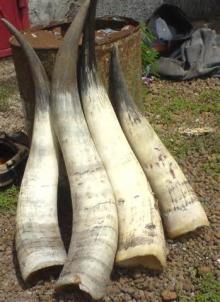

Golf cart cow horns skin#
The antlers are covered with a living skin called velvet when they first form. Antlers are completely regrown every yearĪntlers are a bony growth that is regenerated every year.
Golf cart cow horns pdf#
The Demeter Association has an interesting pdf about Why Cows Have Horns, if you want to read a biodynamic approach to cattle and horns. These air spaces continue to expand from the skull towards the tip of the horn as the cow gets older. Horns have a bony core that contains a network of air spaces. If not removed or broken, horns are a permanent part of the animal. Horns have a substantial blood supply and are directly connected to the sinus cavities of the cow. Aside from the fact that they are both on the head of the animal in question, horns and antlers are really two very different things. Horns and antlers are terms that are commonly interchanged. The sex of the animal has nothing to do with the ability to grow horns.īulls or cows growing horns (or not) is completely genetic. Horns start growing right away so when the calf gets older she can take start to take care of protecting herself. The horn bud is the place where the horn will grow from as the calf gets older.

The small bump you can feel but not see because it is covered with hair is the horn bud. The calf is horned, but you can’t see horns because they haven’t started growing yet. This is our family cow, Aleene, with her new calf. Think most common beef breeds like the Horned Hereford and nearly all dairy breeds including Holstein and Jersey. On the other hand cattle that are have a wider build and are overall more stocky tend to grow smaller horns. Examples of these thinner built cows with longer horns are the Ankole-Watusi from central Africa or the Texas Longhorn. Longer horns also seem to go with a slimmer body shape of the typical cows in that area. Generally breeds that come from a warmer climate have longer horns.

Just like you will look a lot like your relatives so will a cow and her horns. Shape and size of horns are determined by genetics. It is all about her age and if she has given birth. Horns have nothing to do with the terms used to describe her. Before she has a calf she is called a heifer. A cow with horns is called a cowĪctually a cow is called a cow when she has a calf. Her new calf is a bit slow and a little clumsy especially for the first day or so presenting a much easier target than an adult for a hungry predator. She is an especially easy target when she has a new baby (the new baby is called a calf). When a cow is in a situation where she has to take care of herself with little or no help from humans having a set of horns can easily mean the difference between surviving and death.Įven though cows are big they are still a target for predators. Most purebred cattle in the world are born with the ability to naturally grow horns. The simple reason cows have horns is because she got the horned gene from both of her parents. What is the reason why some cattle grow horns and others don’t? This is a yearling Longhorn steer, He already has quite a bit of horn growth considering that he is just about a year old. There are many different breeds of cattle originating and developed with and for all areas of the world.ĭifferent colors, coat patterns, body sizes and temperaments yet some are horned and some are not. Getting Started With Beef Cattle is an article I wrote to help you figure out where to start when you want to get going with raising your own beef. Whether or not a cow has horns depends upon her genetics. Maybe even a crazy big set of horns! How can that be? What exactly makes cattle grow horns?īoth male and female cattle can grow horns, but not all cattle will grow horns. Yet in other settings, every animal out there, both male and female, will be sporting a good size pair of horns. Ever wonder why some cows have horns and some do not? You can look out at a field of grazing cattle and not see a single set of horns in the group.


 0 kommentar(er)
0 kommentar(er)
